It’s March, 1977, and Porsche has dropped a bombshell on fans of the rear-engined, air-cooled 911 – its eventual replacement would be the front-engined, water-cooled 928.
Gone was the flat six power unit, replaced by a throbbing V8, and the new car was also significantly bulkier.
We look at the story of Stuttgart’s super-GT.
The Porsche 928 was a radical departure for a company which, for nearly 30 years, had been fixated with the idea of raw, rear-engined sports cars.
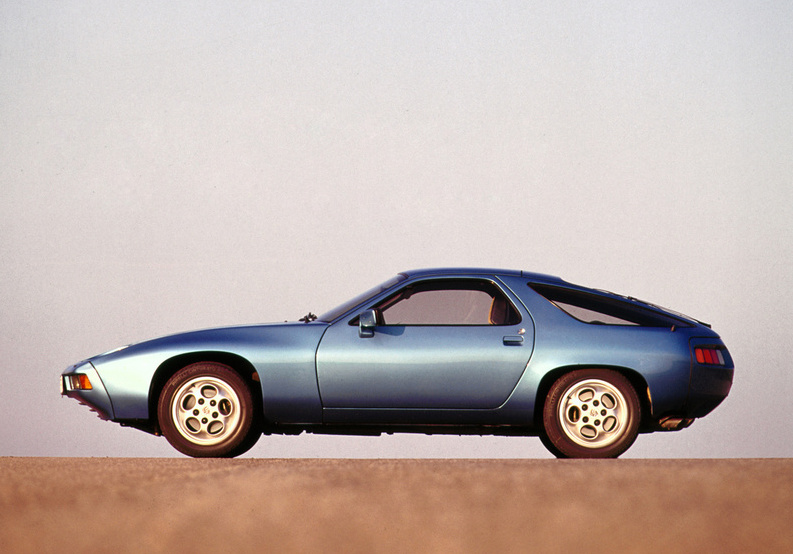
But by the early ‘70s, the 911 looked to be in trouble as a result of increasingly stringent US crash-protection and emissions legislation.
And thoughts at Zuffenhausen were turning towards the car’s ultimate replacement, and a volte face in what makes a great sports car.
Chief among them was chairman Ernst Fuhrmann, who favoured a shift towards a range-topping grant tourer with sports car performance in a more conventional layout.
The idea was to compete with the fast tourers of Mercedes-Benz and BMW, with a firm eye on the crucial US market.
Development of the 928
The 928 represented a number of firsts for Porsche: its first car entirely developed from scratch in-house; its first powered by a V8; and its first move into the luxury grand tourer market.
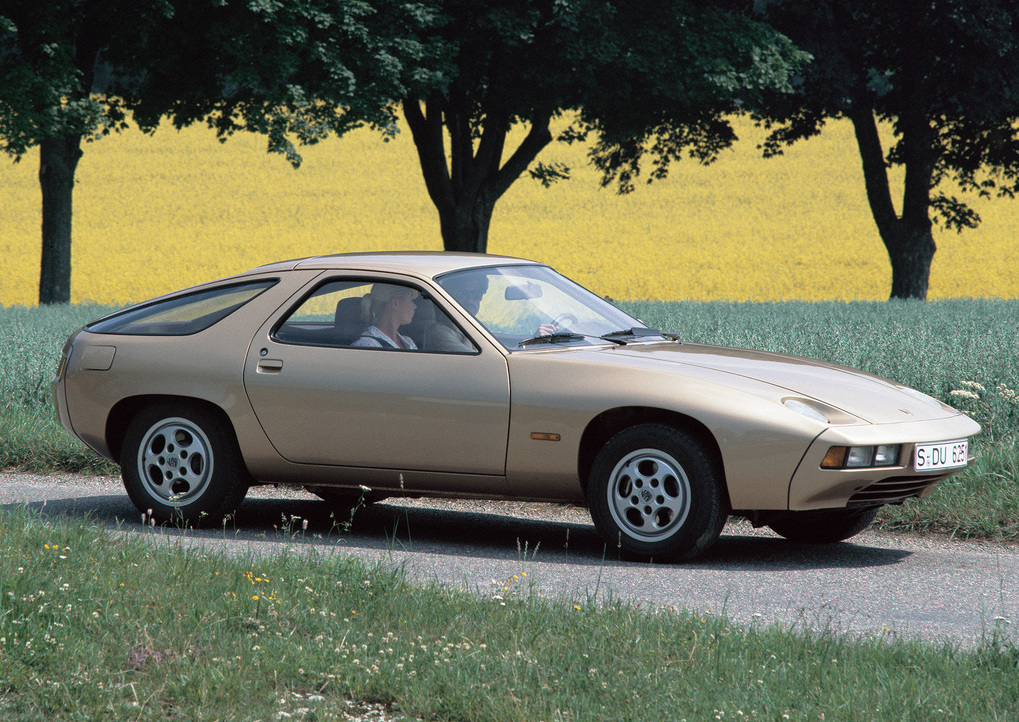
Development work began in earnest in 1972, and a number of different powerplants were considered, including a 5-litre V8, a 4.6-litre V10, and even a 3.3-litre unit when the fuel crisis of 1973 marked a shift towards smaller-engined cars.
But, in the end, it was the 4.5-litre M28 V8 that won the day, rating at 240bhp in European spec – an acceptable compromise between performance and fuel economy.
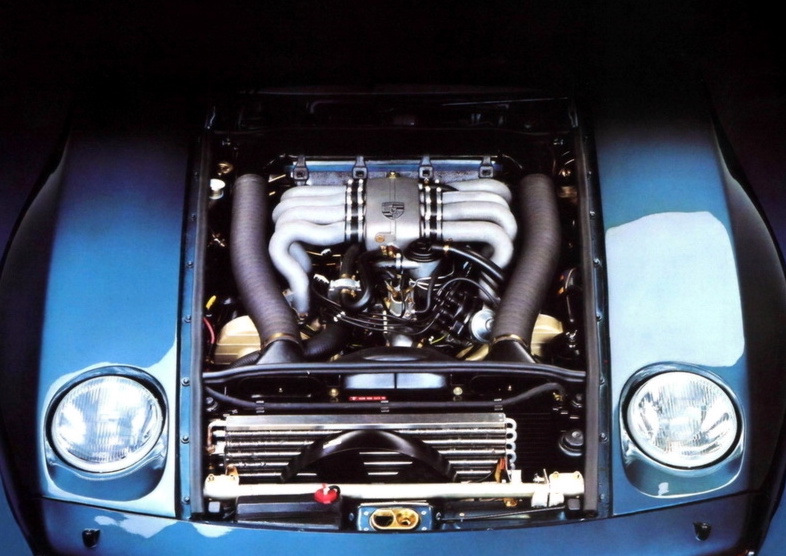
Two key elements of the 928 were the Weissach Axle, named after Porsche’s research facility where it was devised, and torque tubes (also known as a “fast shaft”) which connected the front-mounted engine to the transmission in the rear.
The Weissach Axle was unorthodox, but helped to make the rear wheels toe-in rather than edge out when lifting off during a turn, so the car effectively corrects its own oversteer.
Designed by Wolfgang Möbius and Anatole Lapine, the bodywork was built of a combination of steel, aluminium and plastic, with integral polyurethane bumpers another first.
The exposed headlights faced skywards – like a Lamborghini Miura – before popping forward to race the road ahead, while inside the instrument cluster moved along with the adjustable steering wheel (yet another first).
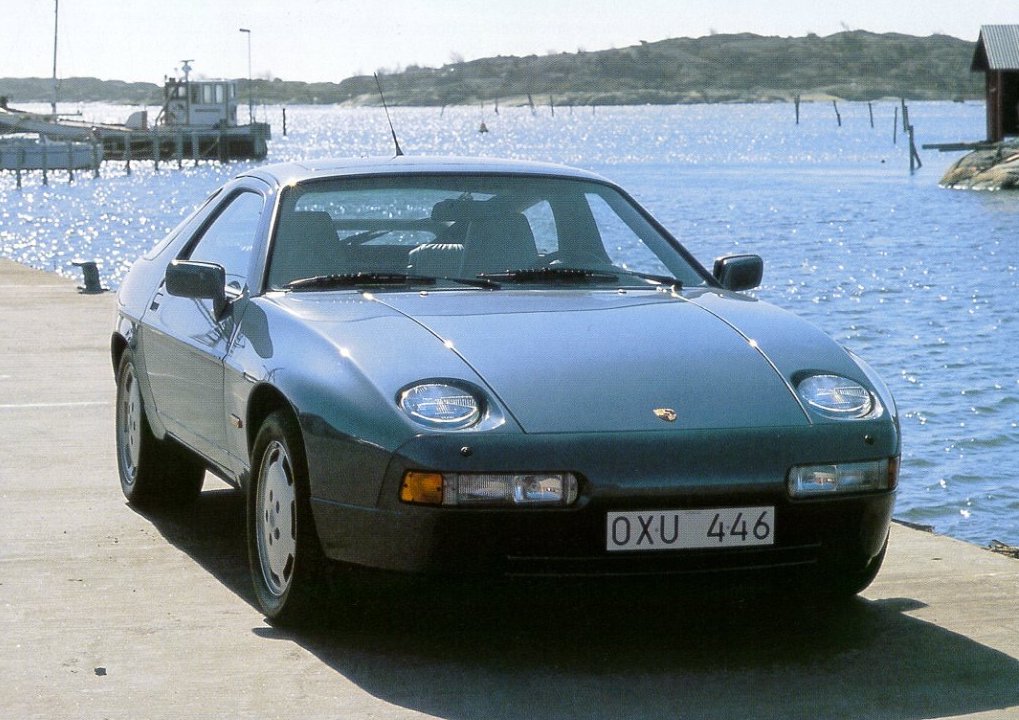
Like our illustration of the Porsche 928: brave new world at the beginning of the article?
Download a free high-quality poster version here.
It was also the first Porsche to feature power-assisted steering, and the whole package added up to a European Car of the Year award for 1978 – the only sports car to have won it.
What the press said
The all-new 928 was launched at the Geneva Motor Show, with 11 pre-production cars provided for road testers to pore over and put through their paces.
Having been disappointed by the Porsche-Audi hybrid 924, Motor Sport magazine’s Clive Richardson declared himself “ecstatic” with the 928.
“This flattened, rounded bullet of a car is full of innovative design features, all functional, none gimmicky,” he wrote.
“The design of the 928 has to be seen in the flesh to appreciate its startling appearance; photographic flattening and miniaturisation do nothing for it at all. The sheer size and bulk of this rounded, fat-tyred missile make it quite stunningly aggressive.”
On the inside, the 928 featured air conditioning, optional electric seat adjustment, adjustable pedals, foot rest and gear lever, as well as door armrests, cruise control, electric windows, cockpit headlamp adjustment and adjustable door mirrors.
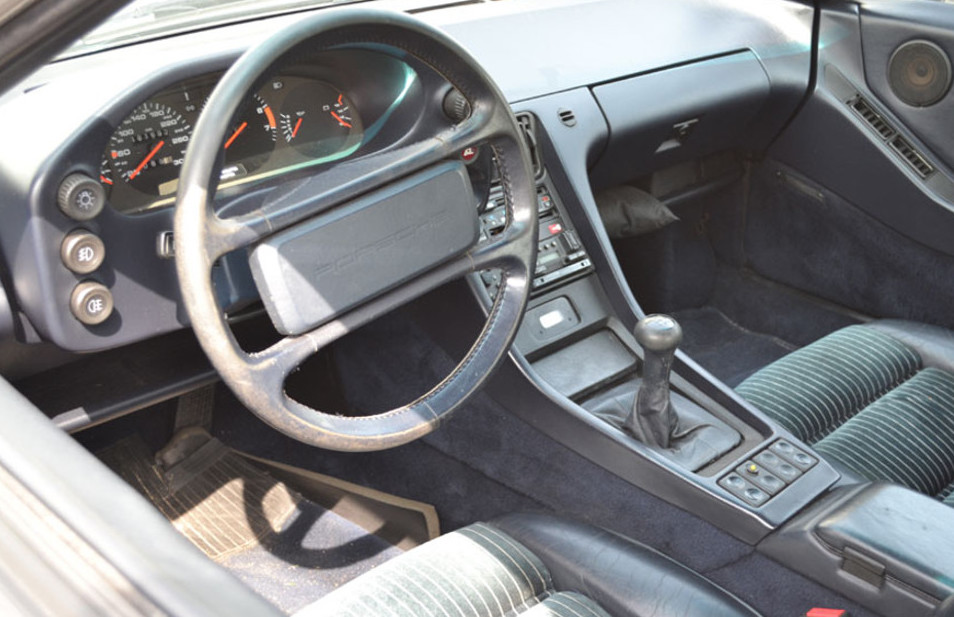
Richardson described the power steering as “so astonishingly good as to be sensational”, allied to “astonishing powers of roadholding”.
For the period, the 928 was no slouch, reaching 60mph in 6.8 seconds, but CAR magazine couldn’t quite make up its mind about the merits of this all-new Porsche.
On the one hand, some of its on-road behaviour was disappointing, almost “half-baked”, with the ride “deteriorating to an alarming degree” on poorer road surfaces.
Part of the test drive took them through the uneven, bouncy roads of the Fens, where the 928’s ride became “harsh, upset and jarring”.
But the flexible engine provided “oomph” on tap, and an ability to cruise effortlessly and quietly at high speeds, while the handling on better roads was second to none.
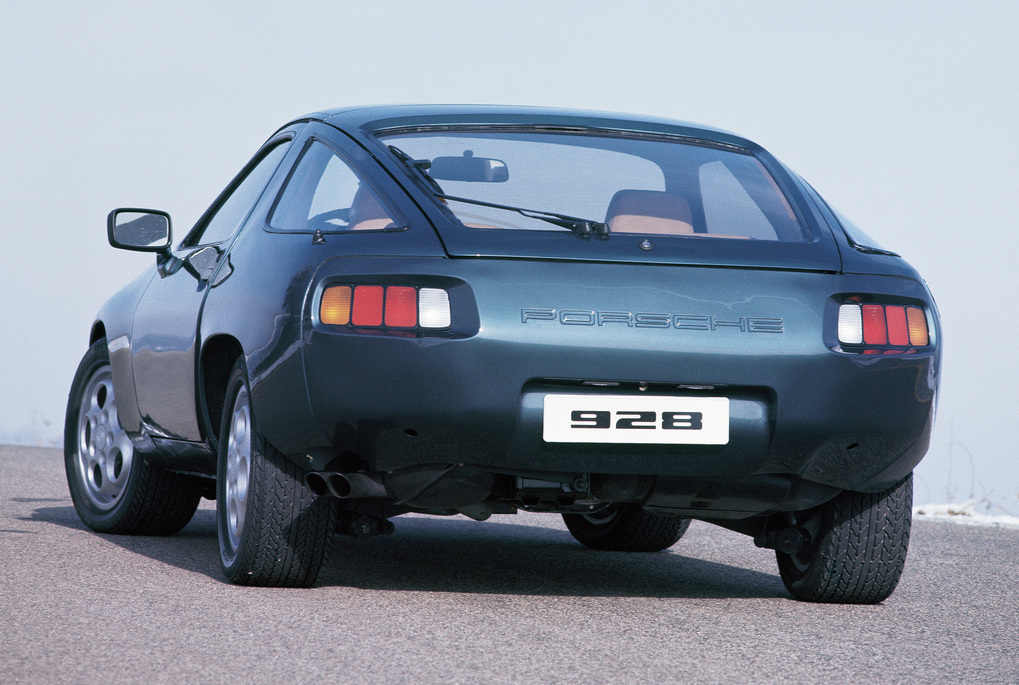
If the engine was quiet, it wasn’t always the case with the big Pirelli P7s, which would utter merely a murmur on some road surfaces, but scream along on others.
Summing up, the magazine said: “(Porsche) will cure the 928’s ills and it must achieve the fine, marvellous balance linking performance and refinement. Development is the only thing that can give it that. It needs it. It deserves it, and when it has it, it will be magnificent.”
More power – the 928S
By 1980, it was already becoming clear that the 928 would not, after all, be replacing the 911, the latter comfortably outselling the new car by a ratio of at least two to one every year.
Would that year’s 928S, with power up 25 per cent to 300bhp, and a useful 10 per cent increase in torque to 280lb ft at 3,600rpm, set the larger car on the road to domination?
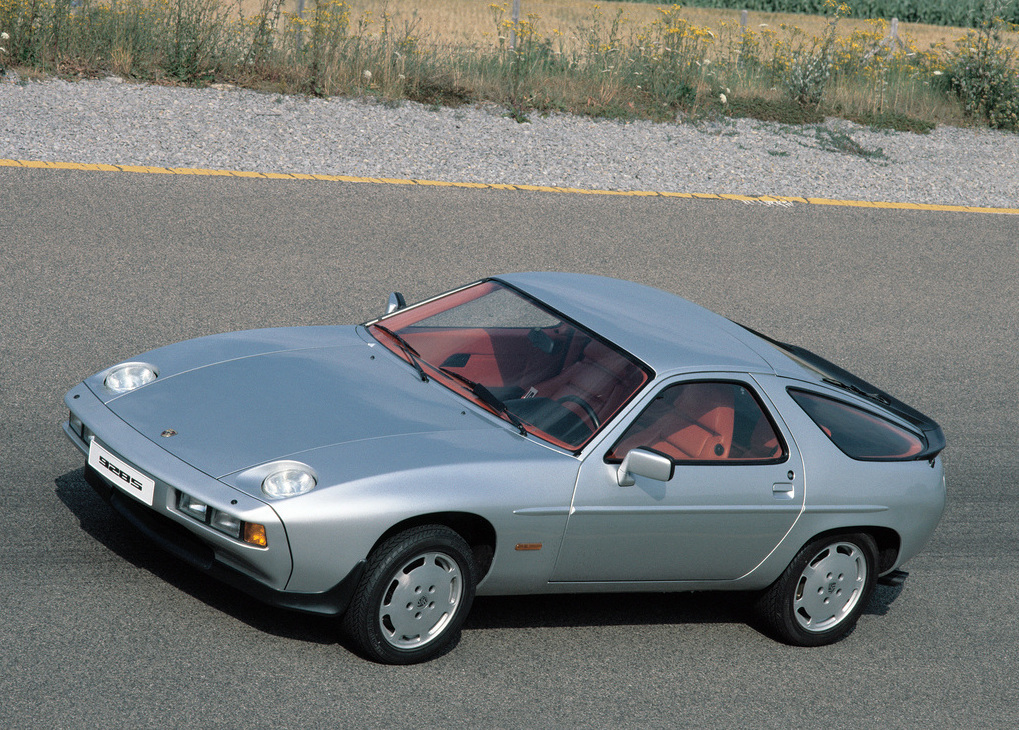
The extra power came from an uplift in engine capacity to 4664cc, a higher 10:1 compression ratio, and revised camshaft profiles – allowing 4-star, and not 2-star, petrol to be used.
Externally, aerodynamics were improved by front and rear spoilers, while the Pirelli P7s were now fitted to new 16-inch forged alloy wheels.
Adrian Flux American car insurance
All of this took the 928S to a top speed of 155mph, joining the ranks of the world’s fastest production cars, hitting 60mph in a claimed 6.2 seconds.
Motor magazine cooed: “At last, the 928 that goes like a Porsche should.”
The new car had an “unrivalled blend of performance, economy, refinement, grip, finish and equipment”, along with an improved ride.
It was now a “sophisticated and mature supercar”, though still lacking the thrills and excitement of a 911, and altogether different beast.
Although improved, the one chink in the Porsche’s armour remained poor road noise suppression, and an ever-present bump thump of poor roads.
928S2: development continues
By the time the 928S series 2 arrived for the 1984 model year, the car had established itself as an accomplished long distance tourer with supercar performance.
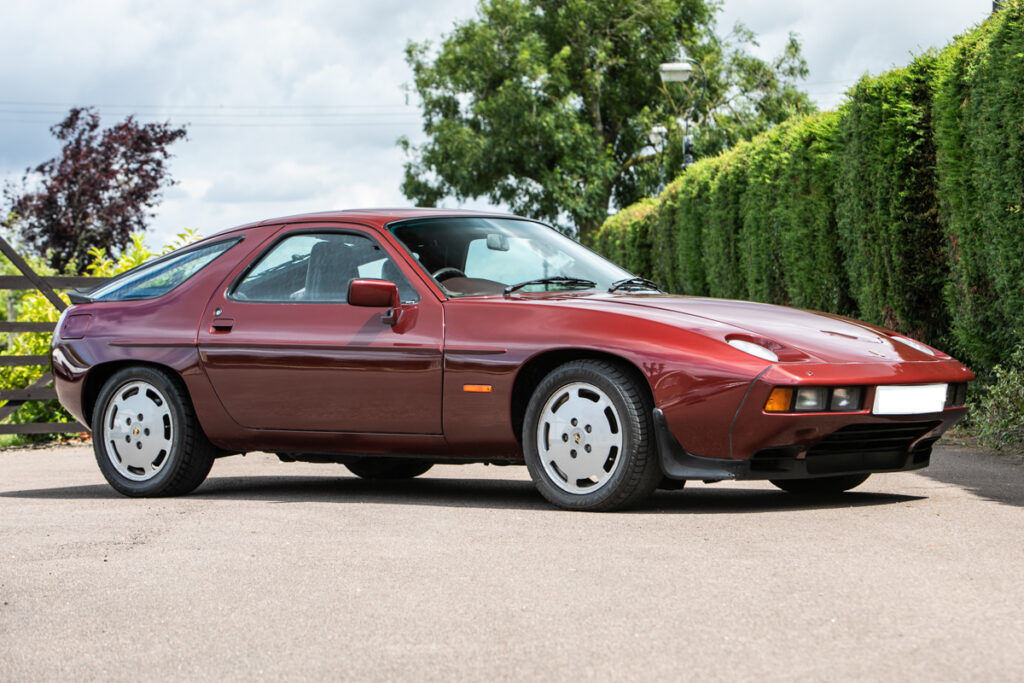
But sales were still slower than Porsche had hoped, and the 911 was by now set to continue in production indefinitely.
Some considered the bigger car as something of a paradox: unable to match the raw driving charisma of the 911, yet lacking refinement compared with fast cruisers from Mercedes and Jaguar.
Another conundrum was whether to go for the (new) four-speed automatic or the five-speed manual, with most buyers opting for the former.
Motor tested the S2, now with 310bhp thanks to upgraded Bosch fuel injection and a new ETZ ignition system, in December 1983, and came down firmly on the side of the manual.
“As a manual, the 928 has resolved its one-time identity crisis to become a superbly rewarding driver’s supercar – and one which, by those lights, is more civilised and practical than most alternatives,” it wrote. “As an automatic, it still falls between two stools.”
But What Car?, describing “the most efficient exotic on the road today”, was equally adamant the auto was the only car to have.
“Drivers who go manual will rob themselves of its greatest asset: its smooth, easy and relaxed nature.”
Series 4: faster, and pricier
You may be wondering, as Porsche jumped from 2 to 4, what happened to the series 3?
One answer could be the US-spec 928S introduced for 1985, featuring a new DOHC, 32-valve, 5-litre engine, unofficially designated series 3 across the pond to distinguish from the 16-valve S.
At the time, the European cars kept their 4.7-litre units, but this would change for 1986 with the emergence of the 5-litre series 4, now costing a whopping £46,500.
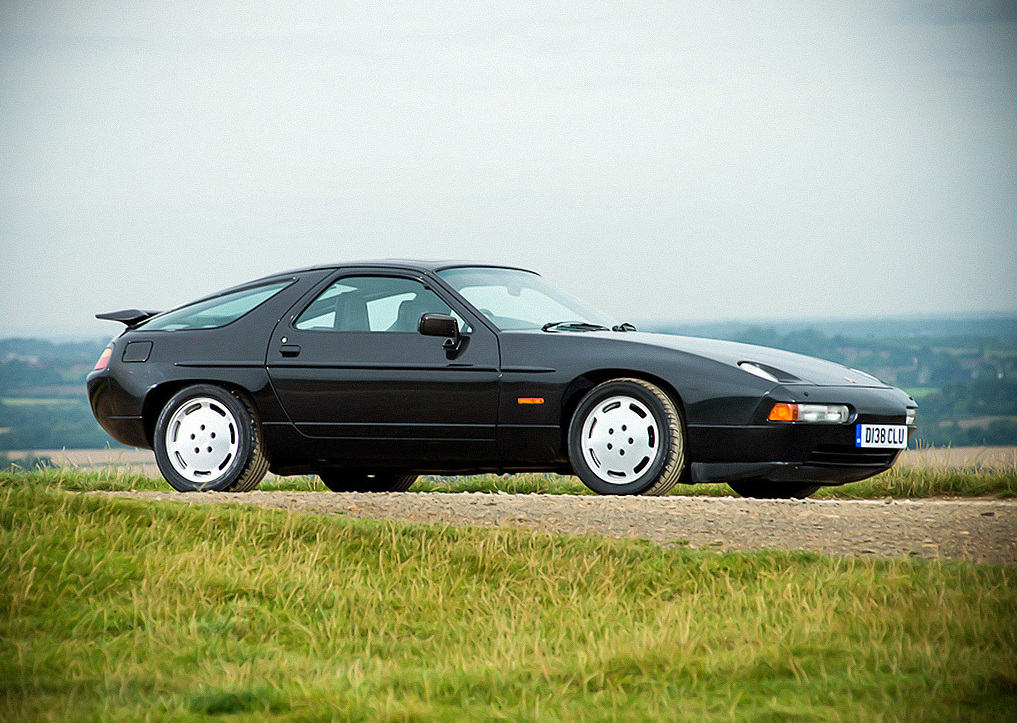
For the money, you got 320bhp, a top speed of 160mph, and some tweaks to the styling including redesigned spoilers and light assemblies.
Autocar considered the car more for the middle-aged executive in a hurry than the diehard 911 enthusiast, with handling and roadholding well up to supercar standards.
However, after nearly 10 years, Porsche had not ironed out all the car’s flaws, at low speeds “every last bump, cats’ eye or expansion joint sends a thump or crash through the bodyshell, while the roar from the ultra low profile D40 Dunlops dominates at higher speeds”.
Motor was still unsure about the car’s appeal.
“Was it a supercar with the rough edges rounded off, or was it a luxury grand tourer with misjudged suspension settings? As a luxury express in the XJS mould its suspension is unacceptably harsh, while as a supercar radburner its auto transmission, more than ever, blunts its cutting edge.”
More variants and the 928GT
For 1988, a lighter-weight Club Sport (CS) became available, as well as an SE – just below the CS – for the UK market. Both cars were only available as manuals.
Both were short lived though, as the 928GT took over, also manual-only and positioned as a sports model with less equipment than the standard 928S4 to keep weight down.
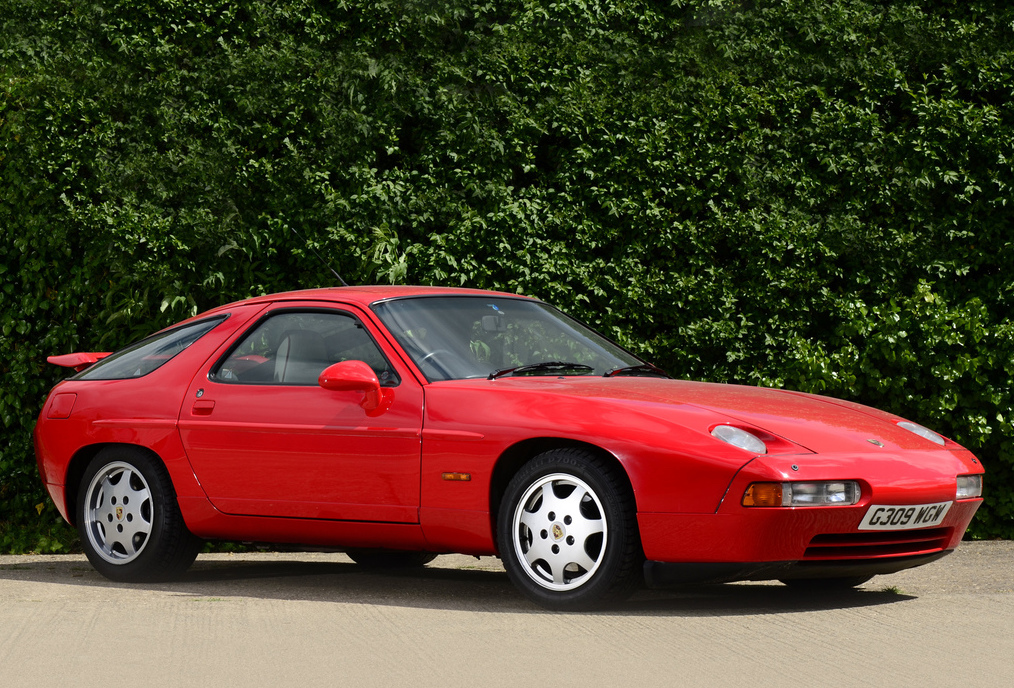
Changes in specification included a digital trip computer on the dashboard, tyre pressure monitoring, and a variable ratio limited-slip differential to further improve grip.
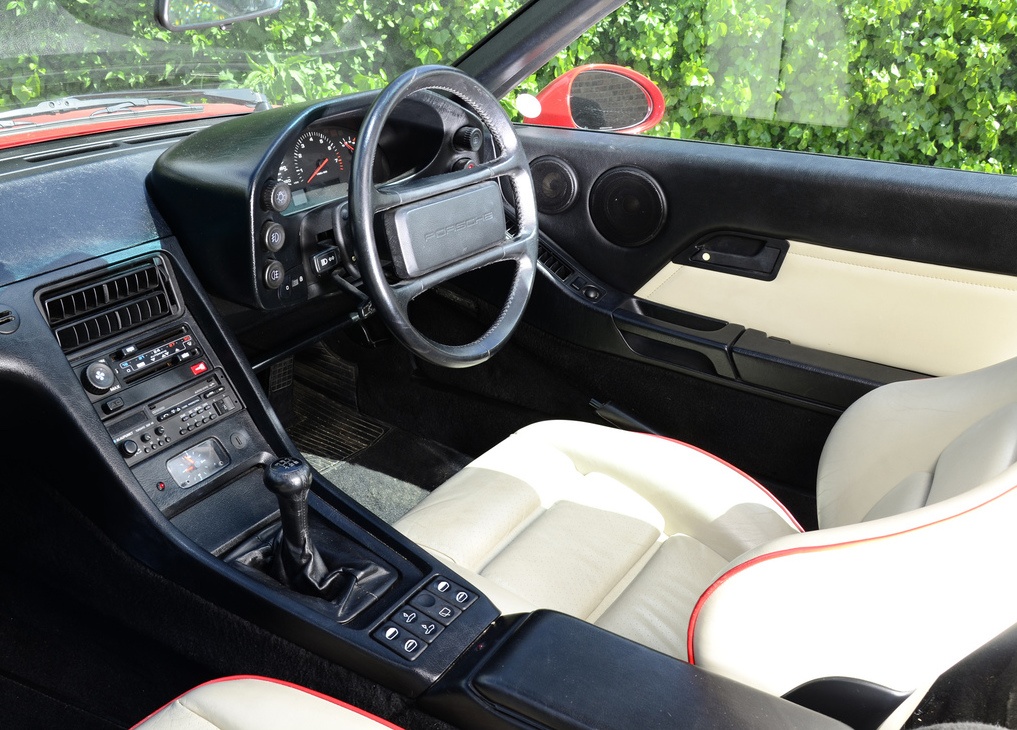
The last hurrah: 928GTS
The ultimate version of the 928 – the GTS – arrived towards the end of 1991 in Europe, replacing both the S4 and the GT.
Now with a 5.4-litre, 340bhp V8, the Porsche competed head on with super-cruisers like BMW’s 850i and Jaguar’s XJR-S.
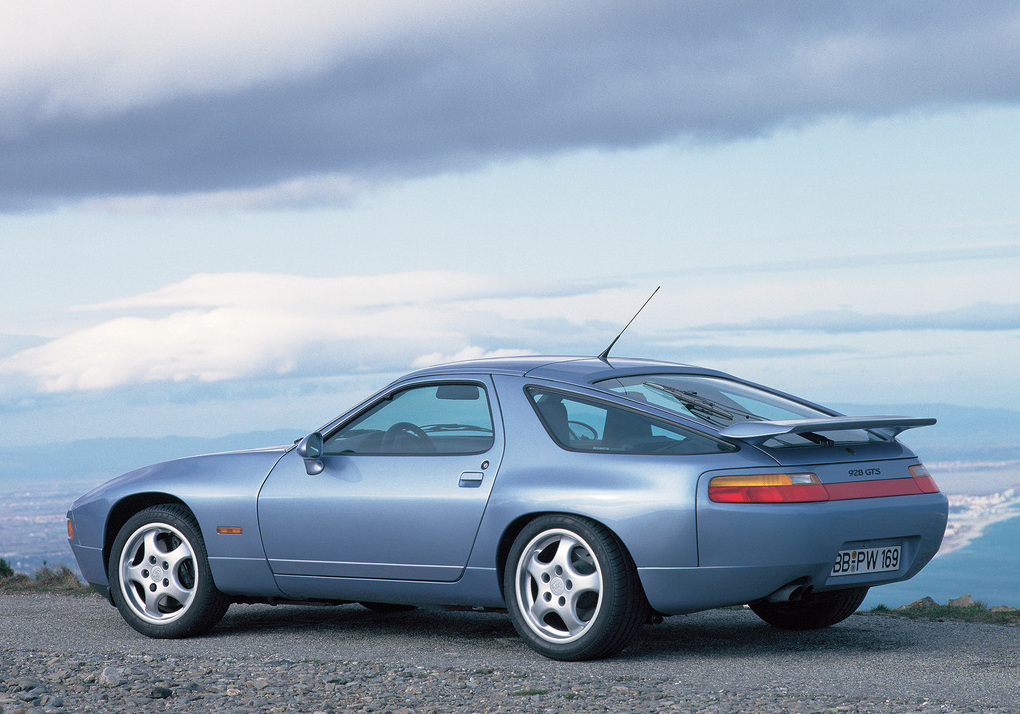
The brakes were necessarily upgraded, while other changes included a wider rear track (with similarly wider rear wings), and improved automatic transmission to cope with the extra power.
With a price tag of an eye-watering £64,998 – remember the car launched in 1977 at just £20,000 – sales were predictably much lower than earlier models, and dropped every year between 1992 and the car’s demise in 1995.
Given that sales had also fallen every year since 1986, the GTS was always likely to be the 928’s last hurrah – but it went out with one hell of a bang.
Russell Bulgin, writing in CAR magazine, said the 14-year-old design of the 928 “can still summon gasps from the kerbside”.
He was pitting the car against the BMW (£66,465) and Jaguar (£48,029) mentioned above, and found the Porsche “blatantly yobbist”, and “rawer, less couth than the other two”.
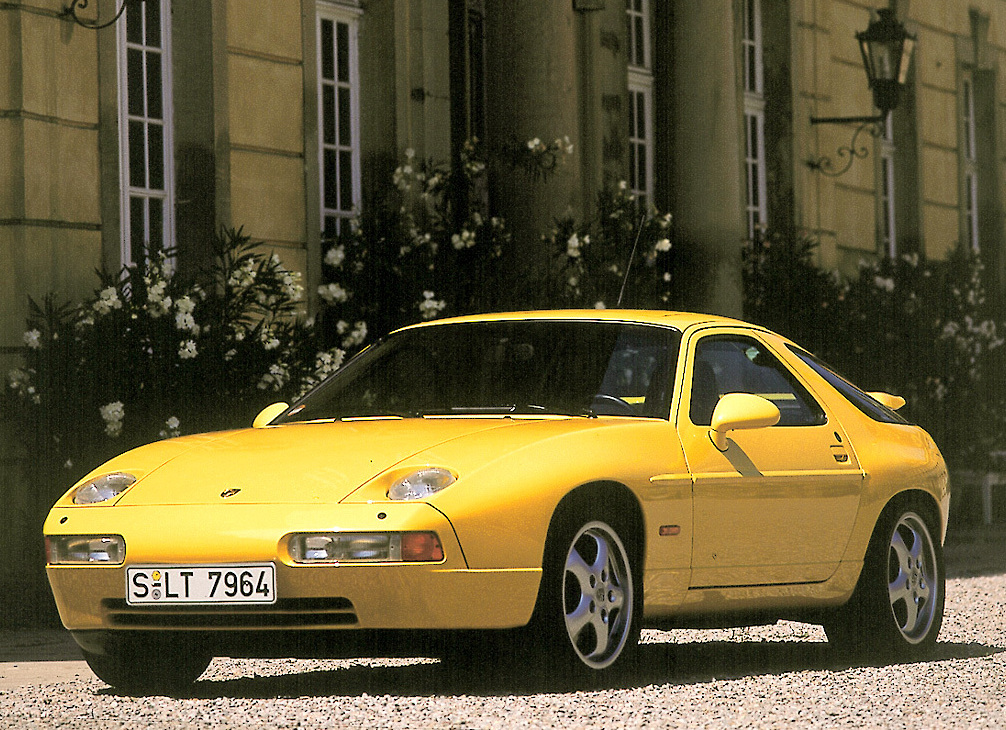
“It is also the fastest, the most fun to drive, (and) the most rewarding to drive,” he wrote. “It pokes out a hardcore V8 throb multi-tracked with a four-valve head-thrash. You love the sound, an American muscle car that has graduated from a top European finishing school. However, you can’t escape it.”
Yes, there was still excessive tyre noise and road rumble, but with 369lb ft of torque on tap, does that really matter…?
“Stick the Porsche in third, let the torque carry the day and the 928 does what neither of its rivals can manage: it shrinks around you, seems to fade to Mazda MX-5 dimensions,” he added. “But it makes more demands on your forbearance than the other two. A deep-rooted lack of manners makes it a less amenable long-distance companion. It is pugnacious, and up and at ‘em at all times.”
The 928 may not have succeeded in replacing the 911 – it sold 61,000 compared to the latter’s 220,000 in its lifetime – but, with hindsight, it was never going to.
It was a very different animal and, while it couldn’t attract enough rear-engined Porsche fans to make it a roaring sales success, it carved its own niche as a grand tourer with supercar performance.
And, in manual form, it also felt like a true sports car.






